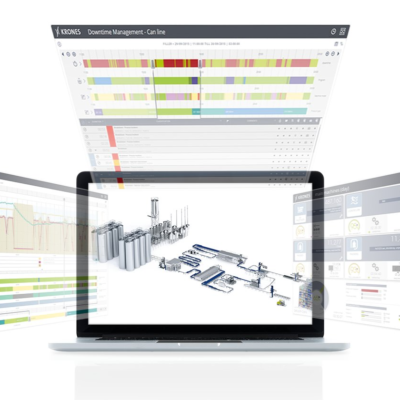
Overall equipment effectiveness or OEE is regularly used as a measurement tool and standard by which performance of equipment, lines, and facilities are benchmarked. This standard has proven to be a powerful method for analyzing and improving manufacturing operations because it takes into consideration not just raw performance, but also the availability of equipment and the quality of the output products. It encompasses all the factors that are pertinent to production without penalizing for irrelevant or uncontrollable situations. There are few manufacturers that don’t use OEE or the concepts behind it to measure and tune their operations.
The initial implementation and subsequent monitoring can be done entirely within an organization. However, many manufacturers struggle to identify the pertinent personnel who are close enough to operations to collaborate well with line personnel, yet high enough within the organization to implement real change. Moreover, personal factors weigh in on the effectiveness of a lead or team, often in the form of personal agendas and potential groupthink when the same teams work on these endeavors for a long period of time. Many find that it is helpful to engage an outside entity to consult on their initial approach as well as to work with their teams on occasion when a fresh perspective is needed. These consultants can bring a broad spectrum of experience from a wide variety of industries and operations to inject new thoughts and energy into stagnant commissions. Process and Data Automation (PDA) has staff who are highly experienced in all facets of manufacturing operations and are experts at implementing the required solutions.
PDA has vast experience in implementing and tuning efficient manufacturing operations. Their personnel also possess deep experience in manufacturing management. Team leader and OEE Consulting Engineer Logan Bemis began his career in an electrical and controls position within a high-speed food manufacturing facility. He transformed his career and spent most of the subsequent decades in leadership positions in Maintenance, Engineering, and Facilities Management. This broad experience is reflected in the approach that he and his team take to OEE implementation and improvement projects. “It would be easy for people to mistake that our approach to addressing client’s OEE challenges will always be controls-related,” says Bemis, “but that isn’t the case. Certainly, we never discount the availability of rich information from system controls or the ability to integrate manual steps into a line’s controllers but those aren’t our only tactics”. Bemis leverages his background in quickly identifying root causes and attaching actual costs to them so that the team can quickly determine not only the problems but the ones with the highest impact.
Bemis’ team interacts with as wide of a cross-section of their clients’ personnel as possible when engaged in these applications. Says Bemis, “Upper management can see the large trends, but we tend to find that people in roles of line supervisors or tenured maintenance personnel have the best insight into what is working and what could use some improvement”. Through his team’s observations and interviews he looks to aggressively zero in on waste. “All operations where ingredients are consumed are examined. We look deeply into general manufacturing items like setup, changeover, and abnormal operations, as well as technical items like optimum output and processing parameters”, Bemis continues. Packaging materials are frequently one of the largest expenses when it comes to manufacturing waste and their team examines this closely.
While line operations like changeovers are necessary and shouldn’t be a point of penalty, increasing efficiency within changeover operations can dramatically reduce the time involved and, thus, provide more line uptime. “Physical automation can be leveraged in this regard”, says Bemis, “not only for automatic setup but also to implement setup verification checklists that are automation-driven”. Checklists and manual operations are frequently incorporated into HMIs and supplemental information like photos and OEM manuals that instruct exactly how to adjust equipment are used to increase both speed and accuracy of the manual steps.
Automation is not overlooked by him and his team. “In order to provide the required repeatability, the automation systems have to be able to deliver”, says Bemis. “If the equipment is incapable of holding tolerances, ensuring consistent operations, or if a higher degree of information is desired then we can implement new solutions in that regard. That is usually only a small piece of the overall puzzle, and we frequently find lower hanging fruit that provides returns much easier and at a significantly lower cost”.
“Our ultimate goal is increased efficiency…we have no other motivation since we usually have no other role in the facility” continues Bemis. “The client’s team learns from how we approach these tasks, and they are in a great position to continue this work after we’ve helped align at the outset”. His team finds that these projects have a continuous lifecycle and, when approached with a mindset of realism and humility, a baseline can be set, and initial gains can be achieved quickly through small steps. The downstream improvements are truly continuous and the internal personnel both revel in successes and become passionate about what they can achieve next.
OEE concepts remain at the core of improving manufacturing productivity. Companies can perform much of this work in-house or they can engage a battery of consultants with different backgrounds in operations, maintenance, and engineering. A call to Process and Data Automation can deliver a complete team with a diverse background to help jump-start internal initiatives or help your team to break over stagnation within your own endeavors.
Posted In: Application Stories
© 2025 Process and Data Automation, All Rights Reserved.